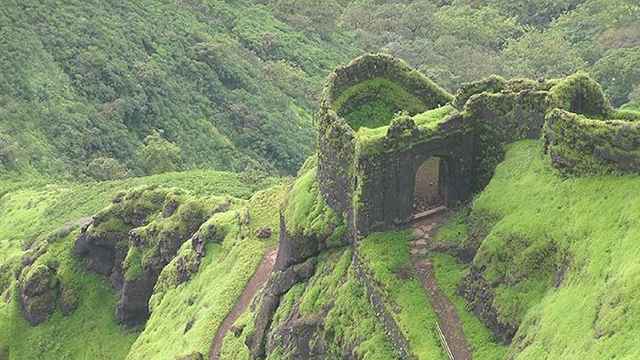Pune city is full of life with rich traditional cultures and a perfect place to relax in the hill stations. Yes, there are many wonderful hill stations near Pune where you can go to relax and refresh during the summer. We have curated a list of some of the best hill stations near Pune to visit this summer!
Here are some of the beautiful hill stations near Pune!
1) Mahabaleshwar
The city of Mahabaleshwar is one of the best hill stations near Pune. The place is filled with evergreen beauty, magnificent hills, and beautiful temples to explore. The evergreen forests amid the Western Ghats attract travelers from across the country.

Distance from Pune: 123 Kms.
Best time to visit: March to June, December to February.
2) Lonavala
Lonavala is the nearest hill station from Pune. If you want to escape from the hustle and bustle of the city for the weekend then Lonavala is a perfect place for you. The place is crowned with enchanting waterfalls, beautiful timberlands, and green valleys. Lonavala is also famous for its traditional sweet Chikki.

Distance from Pune: 65 Kms.
Best time to visit: October to May
3) Khandala
Located in the foothills of the Sahyadri Ranges. Khandala is a wonderful place for beautiful lakes, waterfalls, and green valleys. Khandala is one of the best honeymoon places near Pune and you can admire the wonderful views of the mountains in summer and winter as well. Khandala has become a popular tourist spot to have a great time amidst the natural beauty with your friends and family.

Distance from Pune: 70 Kms.
Best time to visit: July to September
4) Matheran
Matheran is the automobile-free hill station in Pune where you can enjoy the beautiful nature with several viewpoints like Alexander Point, Garbett Point, and lakes and forests. Matheran is a perfect weekend site and staying at cottages or villas here is cost-effective with magnificent views of the surroundings. You can explore the hill station on horseback and sight many wild animals and trees.

Distance from Pune: 120 Kms.
Best time to visit: All year-round.
5) Panchgani
Panchgani is one of the most beautiful hill stations in Pune with picturesque hills and valleys surrounded by magnificent Western Ghats. The hill station features many vintage viewpoints and panoramic views to witness the beauty of the lush green mountains. If you visit Panchgani then do not forget to go boating in the beautiful lakes and paragliding on the scenic slopes.

Distance from Pune: 103 Kms.
Best time to visit: September to May
6) Bhandardara
Bhandardara is one of the beautiful hill stations near Pune which has serene waterfalls, beautiful mountains, a pleasant climate, and lush green nature with an enchanting view of the Western Ghats. Bhandardara is a regular spot for mountain trekkers and hikers from across the world. You can also set up a camp here and experience nature’s charm which is nothing less than experiencing paradise on earth!

Distance from Pune: 173 Kms.
Best time to visit: August to December
7) Tapola
Tapola is also called Mini Kashmir of Maharashtra because of its beautiful valleys, seasonal lakes, and waterfalls. Tapola is the best hill station near Pune for an ideal weekend and even for longer stays. The place is covered with beautiful forests and there is also a wildlife sanctuary, with attractive views of the place.

Distance from Pune: 147 Kms.
Best time to visit: July, August, and October to January
8) Panhala
Panhala is a small hill station and a great getaway from Pune. The hill station has some mind-blowing panoramic views of the valley and a little history with childhood stories of Chatrapati Shivaji. The hill station is known for its haunting stories and many historians come here on weekends to listen to these stories. The stories of the Maratha empire are quite famous and you can interact with the Panhala people, who will share all these stories. A beautiful hill station filled with many stories is a unique tourist destination for weekenders.

Distance from Pune: 238 Kms.
Best time to visit: October to May
9) Amboli
Amboli is one of the top hill stations around Pune where there is an exotic range of flora and fauna. Located in the Sahyadri hills, Amboli is a perfect place for camping, hiking, and fishing at the Hiranyakeshi river. One of the interesting facts about Amboli is there are around 108 Shiva temples here and only 12 have been found till now. Some of the best places to visit in Amboli are Amboli Ghat Waterfall, Amboli Sunset Point, and Shri Hiranyakehswar Mandir.

Distance from Pune: 349 Kms.
Best time to visit: October to February.
10) Jawhar
Jawhar is quite a famous hill station near Pune where you will have many viewpoints to enjoy like the green mountains and gardens. Jawhar is a tribal area with a rich cultural heritage, paintings, and artworks of the Warli tribe which are quite famous. Some of the best places to visit in Jawahar are Kal Mandavi Waterfalls, Hanuman Point, and Sunset Point.

Distance from Pune: 240 Kms.
Best time to visit: July to September
Conclusion: These are some of the best hill stations to visit near Pune. All these hill stations mentioned above can lure you into their beautiful views, adventure activities, and sightseeing. Once you visit these beautiful hill stations, you will come back with a refreshed mind and positive vibes.





























